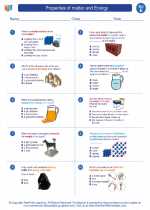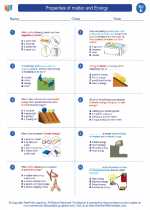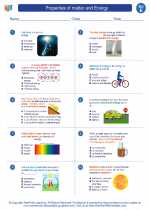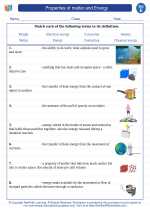Properties of matter and Energy -> skeletal system
Skeletal System
The skeletal system is the framework of the body, consisting of bones and connective tissues that support and protect the body's organs. It also plays a crucial role in movement, blood cell production, and mineral storage.
Functions of the Skeletal System
- Support: Provides a framework for the body and supports soft tissues.
- Protection: Surrounds and protects vital organs such as the brain, heart, and lungs.
- Movement: Works with muscles to facilitate movement and locomotion.
- Mineral Storage: Stores essential minerals such as calcium and phosphorus.
- Blood Cell Production: Bone marrow produces red and white blood cells.
Parts of the Skeletal System
The skeletal system is composed of several parts:
- Bones: Provide structure and support for the body.
- Cartilage: Flexible connective tissue found in the joints and other areas.
- Tendons: Connect muscles to bones, facilitating movement.
- Ligaments: Connect bones to other bones, providing stability and strength to the joints.
Types of Bones
There are five primary types of bones in the human body:
- Long Bones: Found in the arms, legs, fingers, and toes; provide support and facilitate movement.
- Short Bones: Cube-shaped bones found in the wrist and ankle, providing stability and support.
- Flat Bones: Thin and curved bones, such as the ribs and skull, serving as protective shields for internal organs.
- Irregular Bones: Have complex shapes and are found in the spine and face, providing support and protection.
- Sesamoid Bones: Small, round bones found in tendons, such as the patella (kneecap), providing protection and improving mechanical advantage.
Common Skeletal System Disorders
Some common disorders of the skeletal system include:
- Osteoporosis: Weakening of bones due to loss of bone density, leading to increased risk of fractures.
- Arthritis: Inflammation of the joints, causing pain and limited mobility.
- Scoliosis: Abnormal curvature of the spine, affecting posture and movement.
- Osteoarthritis: Degeneration of joint cartilage and the underlying bone, resulting in pain and stiffness.
Study Guide
To study the skeletal system, focus on the following key points:
- Identify the major bones in the human body and their functions.
- Understand the role of cartilage, tendons, and ligaments in the skeletal system.
- Learn about common skeletal system disorders and their effects on the body.
- Explore the importance of a healthy diet and exercise in maintaining strong bones.
Remember to use diagrams and visual aids to enhance your understanding of the skeletal system.
[Skeletal System] Related Worksheets and Study Guides:
.◂Science Worksheets and Study Guides Fifth Grade. Properties of matter and Energy
Study Guide Properties of matter and Energy
Properties of matter and Energy  Worksheet/Answer key
Worksheet/Answer key Properties of matter and Energy
Properties of matter and Energy  Worksheet/Answer key
Worksheet/Answer key Properties of matter and Energy
Properties of matter and Energy  Worksheet/Answer key
Worksheet/Answer key Properties of matter and Energy
Properties of matter and Energy  Vocabulary/Answer key
Vocabulary/Answer key Properties of matter and Energy
Properties of matter and Energy  Vocabulary/Answer key
Vocabulary/Answer key Properties of matter and Energy
Properties of matter and Energy 

 Worksheet/Answer key
Worksheet/Answer key
 Worksheet/Answer key
Worksheet/Answer key
 Worksheet/Answer key
Worksheet/Answer key
 Vocabulary/Answer key
Vocabulary/Answer key
 Vocabulary/Answer key
Vocabulary/Answer key

The resources above cover the following skills:
PHYSICAL SCIENCE (NGSS)
Matter and Its Interactions
Students who demonstrate understanding can:
Develop a model to describe that matter is made of particles too small to be seen.